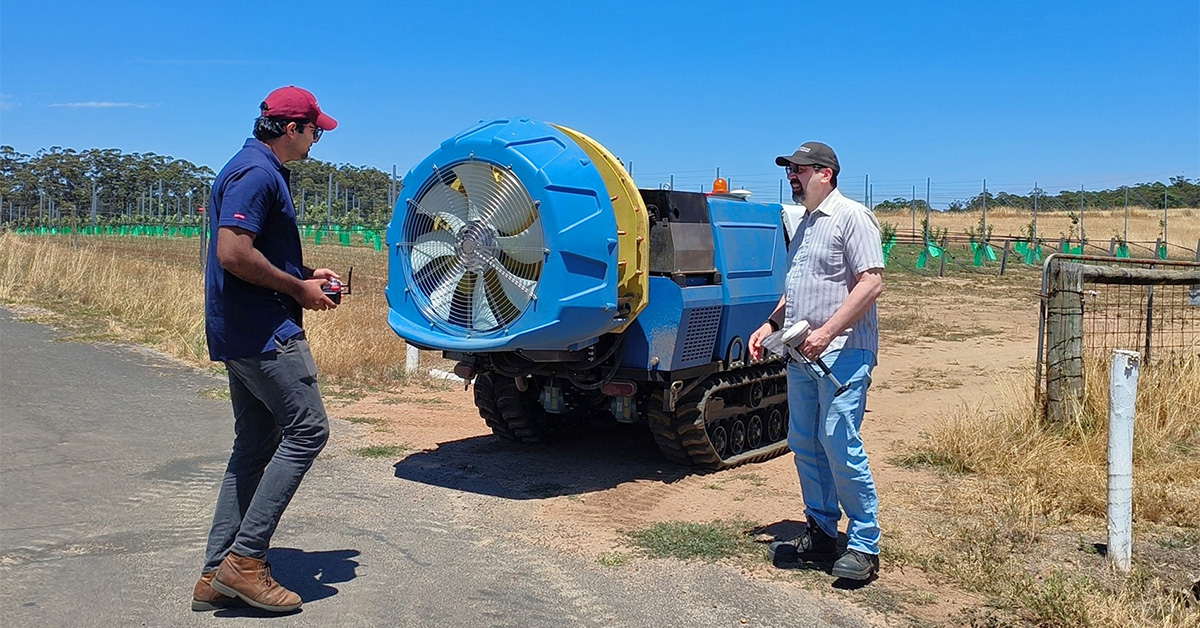Imagine a future where robots handle the tedious task of spraying your orchard, saving you time, money, and labour. That future is closer than you think! A groundbreaking autonomous orchard spray unit is making its debut in Manjimup, promising to transform orchard management and build resilience against our changing climate. Here’s what you need to know.
Autonomous Sprayer Arrives in WA
The Department of Primary Industries and Regional Development (DPIRD) is trialling a revolutionary autonomous sprayer – the first of its kind in Western Australia – as part of a national project. This project explores how multi-leader 2D narrow orchard systems can improve climate and business resilience. The aim is to see how this technology can benefit growers across the country.
According to DPIRD research scientist Dr Asad Ullah, this compact spray unit could create labour efficiencies, reduce wastage and improve on-farm safety. “The diesel autonomous spray unit is guided by digital GPS maps, which create a travel path for the machine to run from the shed to the orchard and then up and down the orchard rows without the need for a driver or even a remote control,” Dr Ullah said.
Precision Spraying for Less Waste and Better Results
The sprayer boasts a 1000-litre tank and offers precise dosage control of fungicides and pesticides, tailored to your orchard’s specific needs. This precision minimises spray drift and prevents overuse, saving you money and reducing your environmental impact. And, at just 1.73 metres wide, it’s perfectly suited for narrow orchard systems with 2.5-metre row spacings.
More Than Just a Sprayer, it’s a Versatile Farmhand
But wait, there’s more! This tech marvel can also be converted to pull conventional farm machinery, like a mower. It can even carry monitoring equipment like LiDAR or cameras, allowing you to perform multiple tasks simultaneously. Talk about a multi-tasker!
Real-World Testing on Display at Manjimup Field Day
The autonomous sprayer will be put to work at DPIRD’s Manjimup Horticulture Research Institute over the next five years, treating trees planted for the project and those part of the Australian National Apple Breeding Program. The research findings will then be rolled out to apple, pear, cherry, apricot, plum and nectarine orchards across Australia.
Want to see this robotic wonder in action? Head to the Narrow Orchard Systems for Future Climates field day on Tuesday, 20 May 2025, at DPIRD’s Manjimup Horticulture Research Institute. Register for catering purposes by emailing asad.ullah@dpird.wa.gov.au.
Future-Proofing Your Orchard for Climate Resilience and Efficiency
Dr Ullah emphasises that modern production systems, like multi-leader 2D narrow row orchards, combined with new technologies and robust crop varieties, will be crucial for growers adapting to warmer climates. “Robotic equipment, like the autonomous spray unit, can help orchard management by reducing labour costs, improving work health and safety, refining treatments and minimising wastage,” he said.
Stay Tuned for More
The project will focus on orchard establishment for the first two years, with yield, quality, and climate resilience being evaluated from the third year. This initiative is part of the five-year Narrow Orchard Systems for Future Climates Hort Innovation Frontiers project.
Keep an eye on WAAA publications for updates on this exciting project and how it can help you build a more efficient and climate-resilient orchard. The future of farming is here, and it’s looking pretty robotic!

Leave a Reply